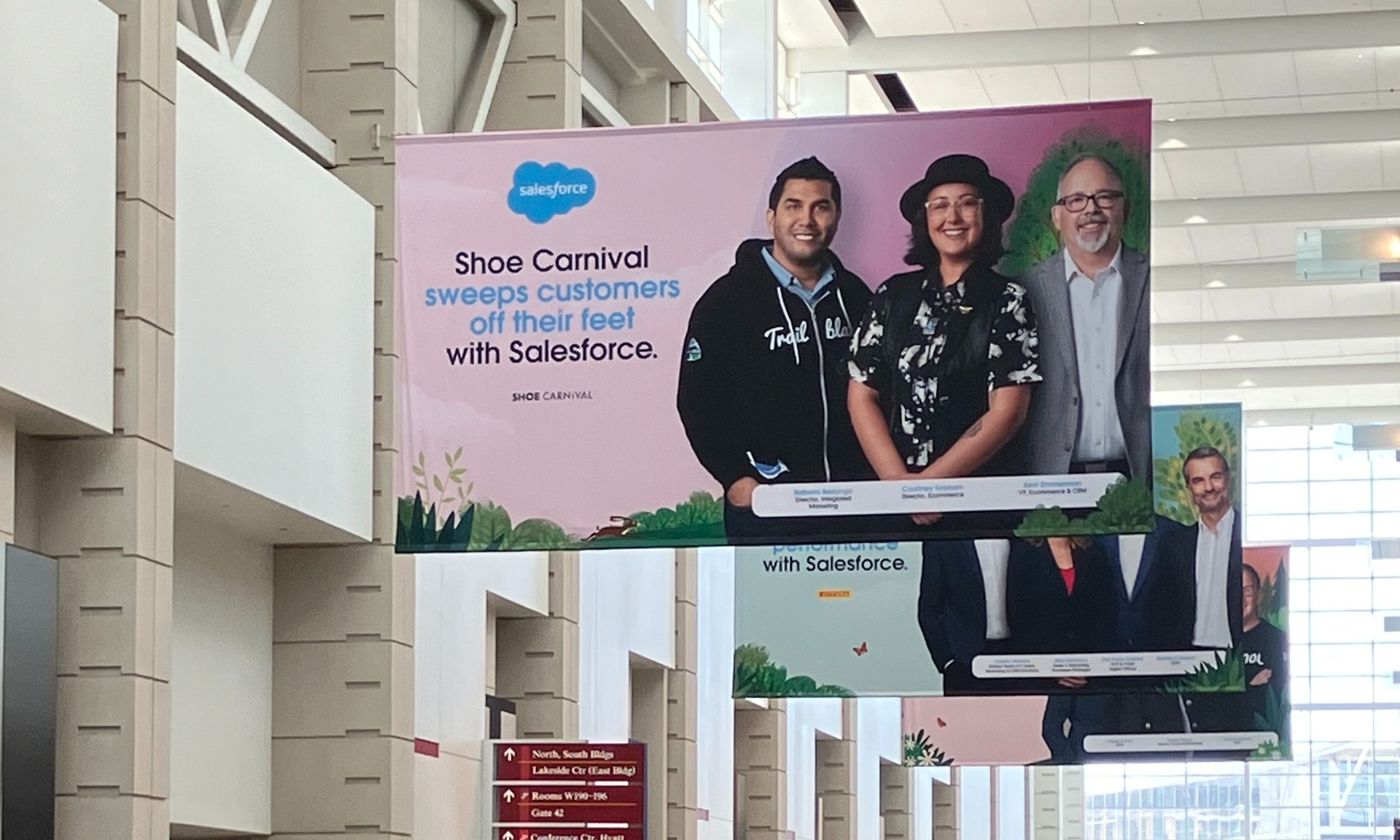MARKETING
How Can SEO Help Your Business in 2022?

SEO is vital for any business, but how exactly can businesses use it to drive growth?
Search traffic is historically the best web traffic you can hope for.
Google has been the single most powerful traffic driver for ages, and while its power has been slowly declining of the years, no other traffic channel has come close to organic traffic:

Here’s how SEO can help your business in 2022:
Understand Your Customers Better
One of the immediate benefits of starting an SEO strategy is an ability to better understand (and relate to) people’s journeys around the web.
What is your target audience struggling with? What kind of questions are they asking? What drives their purchasing decisions?
A well-defined keyword research strategy can answer all those questions and enlighten your whole team.
Ahrefs is one of my favorite tools to perform keyword research because it offers so much useful data including, common modifiers, popular questions, SERP features and more:
You can also run your (or your competitor’s) domain through the tool to see your current positions in Google.
This can give you a more holistic understanding of your keyword rankings, and tell you how people are finding your business (or your competitor’s business) across multiple platforms.
Build More Detailed Buyers’ Personas
Customer personas (also referred to as customer avatar) are people you make up to describe your ideal customers.
Personas make digital marketing more streamlines and understandable by making your buyers easier to relate to.
When creating a persona, you assign some human traits and features, like gender, income, occupation, etc.
Personas also help you create a customer-centric business model, the only business model that will make your business successful in 2022 and beyond.
To build a persona, you need some kind of data, and that’s where SEO-driven web analytics somes very much in handy. Google Analytics comes with detailed demographics data that will turn very useful for persona creation:

As a business owner, you are, of course, prioritizing your customers. Thus, their feedback is important for you to improve your product or service. In order to learn from your visitors, install Google Analytics tool that collects feedback so that you can analyze it and listen to your customers in order to make your website better.
No matter how many professionals work on your website, visitors’ feedback is the most qualitative measure of your success. Using conversational forms on your site will help you collect even more data for your SEO campaigns and create more detailed personas.
Take Control of Your Buyers’ Journeys
Buying journeys have become more complicated over the years. Equipped with diverse devices and tools, a consumer may start their journey on one device and continue on a different one.
They are likely to turn to Google multiple times throughout that fragmented journey, and if your business shows up for multiple queries in multiple sections, you are more likely to win that customer:
A well set-up SEO strategy is targeting more than just organic results. It aims at optimizing the whole SERP (search engine result page):

Take a look at all those sections: Most of them provide businesses with additional opportunities to get found and engaged with. For example, ranking in the Google Video Carousel can help you with conversions as videos present products and services in an accessible way. Nowadays, editing videos can be done with an online video editor and a simple keyword research and video page optimization can help you bring it among the top SERPs.
A critical cog in the wheel of customer relationships is how well you integrate the online-offline experience of the customer. Every interaction your customer has with your brand doesn’t result in a sale. Neither does every Google search they do. However, engagement is a virtual cycle — more brand awareness means more branded searches and more branded searches mean better visibility, rankings, and ultimately, clicks.
So the best thing for you to do would be to understand (and match) customers’ “intent” at every interaction. Again, this requires alignment between your marketing, sales and customer service teams. Using the right CRM software, you can consolidate the results of your SEO, email marketing and lead generation campaigns, create your ideal customer profiles and buyer personas, and funnel back the insights into your content creation process to target them at every stage of the buyer’s journey.
Identify Your Promoters
If you are into SEO, you sure know your backlinks. But backlinks are not just about higher rankings. Knowing who links to you helps you build stronger niche relationships!
Ahrefs is a great tool for understanding your website’s structure and its backlink portfolio. Essentially, your website’s backlink portfolio is all the websites that have linked from their site back to yours.
Another great tool is Buzzsumo that allows you to see exactly who is linking to you, and even the author who was found on that page. You can see what content on your website is the most popular, which is especially useful if you incorporate a blog into your website.

You can also set up an alert to receive an email once anyone is linking to your site. This is a great relationship building tactic: Once anyone links to you, reach out to thank, follow and become a friend!
Control Online Context and Sentiment Better
Finally, being there, paying attention to what people see when searching and trying to optimize for that will empower your business with ways to control what people see when searching for your brand or your important queries.
Imagine your current or future customer typing your brand name in Google’s search box. What are they going to see there? How will that impact their buying journey?

Whether you are there or not, your current and potential customers are searching for you and your brand. The difference is, when you are there watching, you can make your business better and make sure you provide the best solutions to their answers.
Conclusion
Of course, SEO offers many more ways to help your business in 2022, including an ability to position your brand as a knowledge hub by driving your content creation decision.
On top of that, SEO allows you to create the most consistent traffic channel out there. Organic traffic is one of the most valuable traffic-driving channels out there thanks to matching intent (users actually search for answers and solutions, so they are more likely to engage with your site if you give them those answers and solutions).
Customers expect brands to run websites where they can read more about a product or a service, get useful tips from your brand, or find FAQ sections to save time. If you’re about to set up your business, think about ‘budget’ ways to launch a user-friendly website as it helps to grow your business.
The best advice is to do some research, find the tools that work best for you, and never underestimate the value SEO offers for the success of your business.

Ann Smarty
Ann Smarty is the brand NINJA at Internet Marketing Ninjas as well as the founder of numerous startups including MyBlogGuest, MyBlogU, ViralContentBee, TwChat and many more.
Ann Smarty has been an online marketing consultant for 10 years providing high-quality digital marketing consulting through her services and courses (both free and paid).
Ann Smarty’s content marketing ideas have been featured in NYtimes, Mashable, Entrepreneur, Search Engine Land and many more. She is known for her indepth tool reviews, innovative content marketing advice and actionable digital marketing ideas.
Source link
MARKETING
YouTube Ad Specs, Sizes, and Examples [2024 Update]
![YouTube Ad Specs, Sizes, and Examples [2024 Update] YouTube Ad Specs, Sizes, and Examples](https://articles.entireweb.com/wp-content/uploads/2024/06/YouTube-Ad-Specs-Sizes-and-Examples.jpg)
Introduction
With billions of users each month, YouTube is the world’s second largest search engine and top website for video content. This makes it a great place for advertising. To succeed, advertisers need to follow the correct YouTube ad specifications. These rules help your ad reach more viewers, increasing the chance of gaining new customers and boosting brand awareness.
Types of YouTube Ads
Video Ads
- Description: These play before, during, or after a YouTube video on computers or mobile devices.
- Types:
- In-stream ads: Can be skippable or non-skippable.
- Bumper ads: Non-skippable, short ads that play before, during, or after a video.
Display Ads
- Description: These appear in different spots on YouTube and usually use text or static images.
- Note: YouTube does not support display image ads directly on its app, but these can be targeted to YouTube.com through Google Display Network (GDN).
Companion Banners
- Description: Appears to the right of the YouTube player on desktop.
- Requirement: Must be purchased alongside In-stream ads, Bumper ads, or In-feed ads.
In-feed Ads
- Description: Resemble videos with images, headlines, and text. They link to a public or unlisted YouTube video.
Outstream Ads
- Description: Mobile-only video ads that play outside of YouTube, on websites and apps within the Google video partner network.
Masthead Ads
- Description: Premium, high-visibility banner ads displayed at the top of the YouTube homepage for both desktop and mobile users.
YouTube Ad Specs by Type
Skippable In-stream Video Ads
- Placement: Before, during, or after a YouTube video.
- Resolution:
- Horizontal: 1920 x 1080px
- Vertical: 1080 x 1920px
- Square: 1080 x 1080px
- Aspect Ratio:
- Horizontal: 16:9
- Vertical: 9:16
- Square: 1:1
- Length:
- Awareness: 15-20 seconds
- Consideration: 2-3 minutes
- Action: 15-20 seconds
Non-skippable In-stream Video Ads
- Description: Must be watched completely before the main video.
- Length: 15 seconds (or 20 seconds in certain markets).
- Resolution:
- Horizontal: 1920 x 1080px
- Vertical: 1080 x 1920px
- Square: 1080 x 1080px
- Aspect Ratio:
- Horizontal: 16:9
- Vertical: 9:16
- Square: 1:1
Bumper Ads
- Length: Maximum 6 seconds.
- File Format: MP4, Quicktime, AVI, ASF, Windows Media, or MPEG.
- Resolution:
- Horizontal: 640 x 360px
- Vertical: 480 x 360px
In-feed Ads
- Description: Show alongside YouTube content, like search results or the Home feed.
- Resolution:
- Horizontal: 1920 x 1080px
- Vertical: 1080 x 1920px
- Square: 1080 x 1080px
- Aspect Ratio:
- Horizontal: 16:9
- Square: 1:1
- Length:
- Awareness: 15-20 seconds
- Consideration: 2-3 minutes
- Headline/Description:
- Headline: Up to 2 lines, 40 characters per line
- Description: Up to 2 lines, 35 characters per line
Display Ads
- Description: Static images or animated media that appear on YouTube next to video suggestions, in search results, or on the homepage.
- Image Size: 300×60 pixels.
- File Type: GIF, JPG, PNG.
- File Size: Max 150KB.
- Max Animation Length: 30 seconds.
Outstream Ads
- Description: Mobile-only video ads that appear on websites and apps within the Google video partner network, not on YouTube itself.
- Logo Specs:
- Square: 1:1 (200 x 200px).
- File Type: JPG, GIF, PNG.
- Max Size: 200KB.
Masthead Ads
- Description: High-visibility ads at the top of the YouTube homepage.
- Resolution: 1920 x 1080 or higher.
- File Type: JPG or PNG (without transparency).
Conclusion
YouTube offers a variety of ad formats to reach audiences effectively in 2024. Whether you want to build brand awareness, drive conversions, or target specific demographics, YouTube provides a dynamic platform for your advertising needs. Always follow Google’s advertising policies and the technical ad specs to ensure your ads perform their best. Ready to start using YouTube ads? Contact us today to get started!
MARKETING
Why We Are Always ‘Clicking to Buy’, According to Psychologists

Amazon pillows.
MARKETING
A deeper dive into data, personalization and Copilots

Salesforce launched a collection of new, generative AI-related products at Connections in Chicago this week. They included new Einstein Copilots for marketers and merchants and Einstein Personalization.
To better understand, not only the potential impact of the new products, but the evolving Salesforce architecture, we sat down with Bobby Jania, CMO, Marketing Cloud.
Dig deeper: Salesforce piles on the Einstein Copilots
Salesforce’s evolving architecture
It’s hard to deny that Salesforce likes coming up with new names for platforms and products (what happened to Customer 360?) and this can sometimes make the observer wonder if something is brand new, or old but with a brand new name. In particular, what exactly is Einstein 1 and how is it related to Salesforce Data Cloud?
“Data Cloud is built on the Einstein 1 platform,” Jania explained. “The Einstein 1 platform is our entire Salesforce platform and that includes products like Sales Cloud, Service Cloud — that it includes the original idea of Salesforce not just being in the cloud, but being multi-tenancy.”
Data Cloud — not an acquisition, of course — was built natively on that platform. It was the first product built on Hyperforce, Salesforce’s new cloud infrastructure architecture. “Since Data Cloud was on what we now call the Einstein 1 platform from Day One, it has always natively connected to, and been able to read anything in Sales Cloud, Service Cloud [and so on]. On top of that, we can now bring in, not only structured but unstructured data.”
That’s a significant progression from the position, several years ago, when Salesforce had stitched together a platform around various acquisitions (ExactTarget, for example) that didn’t necessarily talk to each other.
“At times, what we would do is have a kind of behind-the-scenes flow where data from one product could be moved into another product,” said Jania, “but in many of those cases the data would then be in both, whereas now the data is in Data Cloud. Tableau will run natively off Data Cloud; Commerce Cloud, Service Cloud, Marketing Cloud — they’re all going to the same operational customer profile.” They’re not copying the data from Data Cloud, Jania confirmed.
Another thing to know is tit’s possible for Salesforce customers to import their own datasets into Data Cloud. “We wanted to create a federated data model,” said Jania. “If you’re using Snowflake, for example, we more or less virtually sit on your data lake. The value we add is that we will look at all your data and help you form these operational customer profiles.”
Let’s learn more about Einstein Copilot
“Copilot means that I have an assistant with me in the tool where I need to be working that contextually knows what I am trying to do and helps me at every step of the process,” Jania said.
For marketers, this might begin with a campaign brief developed with Copilot’s assistance, the identification of an audience based on the brief, and then the development of email or other content. “What’s really cool is the idea of Einstein Studio where our customers will create actions [for Copilot] that we hadn’t even thought about.”
Here’s a key insight (back to nomenclature). We reported on Copilot for markets, Copilot for merchants, Copilot for shoppers. It turns out, however, that there is just one Copilot, Einstein Copilot, and these are use cases. “There’s just one Copilot, we just add these for a little clarity; we’re going to talk about marketing use cases, about shoppers’ use cases. These are actions for the marketing use cases we built out of the box; you can build your own.”
It’s surely going to take a little time for marketers to learn to work easily with Copilot. “There’s always time for adoption,” Jania agreed. “What is directly connected with this is, this is my ninth Connections and this one has the most hands-on training that I’ve seen since 2014 — and a lot of that is getting people using Data Cloud, using these tools rather than just being given a demo.”
What’s new about Einstein Personalization
Salesforce Einstein has been around since 2016 and many of the use cases seem to have involved personalization in various forms. What’s new?
“Einstein Personalization is a real-time decision engine and it’s going to choose next-best-action, next-best-offer. What is new is that it’s a service now that runs natively on top of Data Cloud.” A lot of real-time decision engines need their own set of data that might actually be a subset of data. “Einstein Personalization is going to look holistically at a customer and recommend a next-best-action that could be natively surfaced in Service Cloud, Sales Cloud or Marketing Cloud.”
Finally, trust
One feature of the presentations at Connections was the reassurance that, although public LLMs like ChatGPT could be selected for application to customer data, none of that data would be retained by the LLMs. Is this just a matter of written agreements? No, not just that, said Jania.
“In the Einstein Trust Layer, all of the data, when it connects to an LLM, runs through our gateway. If there was a prompt that had personally identifiable information — a credit card number, an email address — at a mimum, all that is stripped out. The LLMs do not store the output; we store the output for auditing back in Salesforce. Any output that comes back through our gateway is logged in our system; it runs through a toxicity model; and only at the end do we put PII data back into the answer. There are real pieces beyond a handshake that this data is safe.”
-

 WORDPRESS3 days ago
WORDPRESS3 days agoWordPress biz Automattic details WP Engine deal demands • The Register
-
SEARCHENGINES5 days ago
Daily Search Forum Recap: September 30, 2024
-

 SEARCHENGINES6 days ago
SEARCHENGINES6 days agoGoogle Volatility With Gains & Losses, Updated Web Spam Policies, Cache Gone & More Search News
-

 SEO7 days ago
SEO7 days ago6 Things You Can Do to Compete With Big Sites
-
SEARCHENGINES4 days ago
Daily Search Forum Recap: October 1, 2024
-

 SEO6 days ago
SEO6 days agoAn In-Depth Guide For Businesses
-

 AFFILIATE MARKETING6 days ago
AFFILIATE MARKETING6 days agoNvidia CEO Jensen Huang Praises Nuclear Energy to Power AI
-

 AFFILIATE MARKETING6 days ago
AFFILIATE MARKETING6 days agoThis Minimalist Lamp Lets You Pick From 16 Million+ Lighting Colors for Maximum Productivity
















You must be logged in to post a comment Login